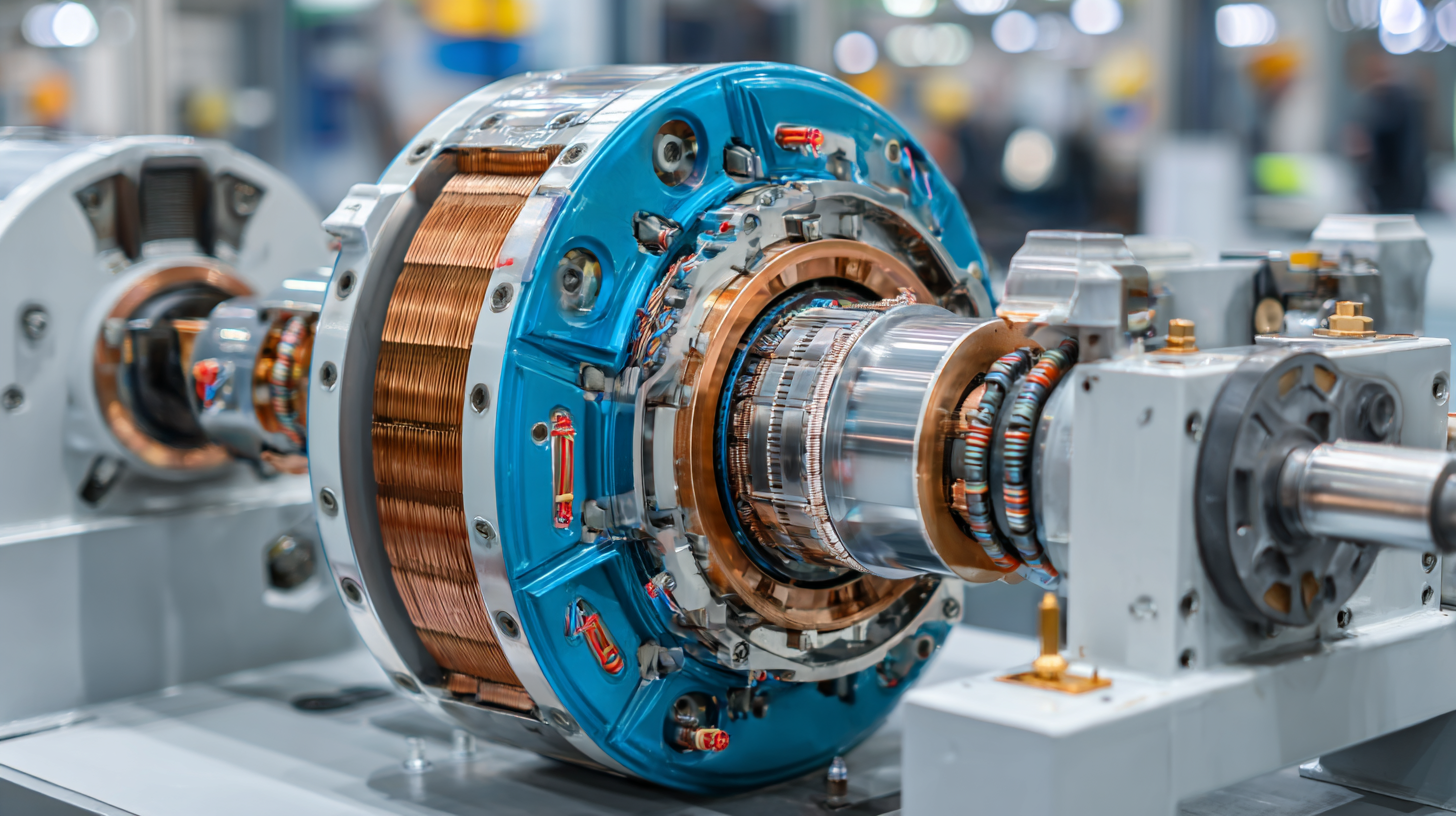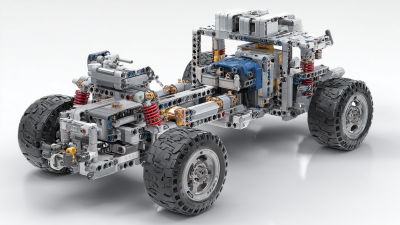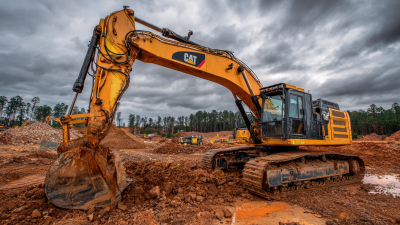How to Navigate the World of Mechanical and Electrical Engineering Innovations
In an era characterized by rapid technological advancements, the field of mechanical and electrical engineering stands at the forefront of innovation. According to the Global Engineering Report 2022, the mechanical and electrical engineering sectors are expected to experience growth rates of 7% and 5% respectively over the next five years, driven by the increasing adoption of smart technologies and automation across industries. As organizations seek to enhance efficiency and sustainability, navigating the intricacies of these innovations becomes paramount.

From robotics and renewable energy systems to IoT applications, the innovations within mechanical and electrical engineering not only redefine operational standards but also present new opportunities for engineers and businesses alike. This guide aims to equip readers with essential strategies to effectively navigate these emerging trends and leverage the full potential of mechanical and electrical engineering innovations in a competitive landscape.
Understanding the Basics of Mechanical and Electrical Engineering Innovations
Mechanical and electrical engineering innovations are at the forefront of technological advancement, shaping industries and everyday life. These fields focus on the design, development, and application of machines and electrical systems. Understanding the foundations of these disciplines is crucial for anyone looking to navigate their complexities and discover the myriad of opportunities they present.
At the core of mechanical engineering lies the study of forces, motion, and energy. This involves the use of materials and the principles of thermodynamics to create efficient machines and systems. Conversely, electrical engineering centers on the manipulation of electric power and signals. Familiarizing oneself with key concepts such as circuits, electromagnetism, and control systems is essential for grasping the innovations emerging from this discipline. Together, they yield groundbreaking technologies, from renewable energy solutions to automation in manufacturing.
By exploring the basic principles and interconnections of mechanical and electrical engineering, individuals can appreciate how these fields contribute to advancements like robotics, smart devices, and sustainable engineering solutions. A solid grasp of these fundamentals not only enhances understanding but also sparks creativity in developing future innovations.

Identifying Emerging Technologies in the Engineering Sector
The engineering sector is currently experiencing rapid advancements, particularly in mechanical and electrical engineering innovations. One of the key emerging technologies is the integration of automation and AI-driven systems. According to a report by the International Federation of Robotics, the global market for industrial robots is expected to reach $75 billion by 2025, showcasing a dramatic shift towards automated manufacturing processes. This trend not only enhances productivity but also reduces operational costs, making it a vital consideration for engineers and organizations striving for efficiency.

Another significant area of innovation is the development of renewable energy technologies. The International Energy Agency (IEA) projects that by 2030, renewables will account for 55% of global electricity generation. Advancements in solar panel efficiency and wind turbine technology are at the forefront of this change, enabling more sustainable and cost-effective energy solutions. Engineers focused on these technologies are poised to lead the charge in creating systems that address both energy sustainability and electrical engineering challenges, indicating a robust future for those entering the field.
Assessing the Impact of Innovations on Industry Standards and Practices
As mechanical and electrical engineering industries evolve, the impact of innovations becomes increasingly critical in shaping industry standards and practices. According to a recent report by the International Federation of Robotics, the automation market is expected to grow by 25% annually, driven by advancements in artificial intelligence and robotics. This rapid progression mandates a reevaluation of existing standards to ensure safety, efficiency, and interoperability among new technologies.
In the face of these changes, professionals in the field should actively engage in continuous education and adaptation. A study by McKinsey & Company highlights that companies integrating innovative technologies can see productivity increases of up to 45%. Therefore, embracing new tools and methodologies not only enhances operational efficiency but also positions organizations as leaders in the field.
Tips: It is essential to stay informed about industry developments through conferences and webinars. Additionally, leveraging collaborative platforms for knowledge exchange can significantly aid in understanding and implementing best practices that align with the latest innovations. Always prioritize stakeholder engagement to ensure that innovations meet the practical needs of the industry.
Strategies for Implementing New Engineering Solutions in Projects
In today's fast-evolving landscape of mechanical and electrical engineering, implementing innovative solutions in projects requires a strategic approach. Success lies in understanding the core objectives of your project and aligning them with innovative technologies. Start by conducting thorough research on the latest developments within the engineering field. This will help you identify which innovations align best with your project goals and constraints.
Tips: Build a cross-functional team that includes professionals from different engineering backgrounds. Their diverse perspectives can lead to creative solutions and enhance the project’s adaptability to new technologies. Emphasize ongoing collaboration throughout the project to facilitate continuous feedback and adjustments as innovations are integrated.
Another crucial strategy involves prototyping and testing new solutions on a smaller scale before full implementation. This allows you to evaluate performance and troubleshoot potential issues without committing extensive resources. Gradually scaling successful prototypes into larger applications can minimize risks and optimize the integration of mechanical and electrical innovations.
Tips: Foster a culture of innovation within your team by encouraging experimentation and accepting failures as learning opportunities. This mindset can significantly boost morale and drive the enthusiasm needed to tackle complex engineering challenges.
Collaborating with Engineers and Stakeholders for Successful Innovation Integration
Successfully integrating innovations in mechanical and electrical engineering hinges on effective collaboration between engineers and stakeholders. According to the National Engineering Reports, effective collaboration can increase the success rate of engineering projects by over 30%. This collaboration not only facilitates the sharing of knowledge and expertise among teams but also ensures that diverse perspectives are considered throughout the innovation process. Engaging with stakeholders early and continuously can lead to more refined products that meet market demands and enhance user experience.
Furthermore, the World Economic Forum emphasizes that projects involving interdisciplinary collaboration tend to deliver higher satisfaction rates, with a 25% increase in customer approval noted in industry-specific case studies. By fostering open lines of communication between engineers and stakeholders, organizations can better align their technical innovations with real-world needs. As the pace of technological change accelerates, the importance of strategic partnerships cannot be overstated; leveraging the expertise of all parties involved is crucial for driving meaningful and sustainable advancements in the field.
Engineering Innovations Integration: Collaborating for Success
Related Posts
-

Innovative Applications of Best Mechanical Engineering Tech in Modern Industries
-

Top Strategies for Maximizing Efficiency with Best Civil Engineering Machines
-

Exploring the Essentials of Auto Mechanical Engineering Processes
-

How to Enhance Your Supply Chain with Mechanical Engineering Tech Solutions
-

Ultimate Guide to Mastering Automotive Mechanical Engineering for Future Innovators
-

Unveiling Secrets to Source Premium Suppliers in Best Machine Engineering
